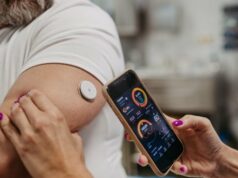
Research into diabetes has rapidly advanced since the 20th century and new technology is being developed each year to help improve diabetes management.
As this month is Diabetes Awareness Month we wanted to shine the spotlight on some of the major breakthroughs from the 1920s until the present day and take a look at the future of diabetes research and technology.
The discovery of insulin and glucose control
It was during the 1920s that the link between the pancreas and diabetes was discovered. Dr Frederick Banting and Charles Best administered islets of Langerhans from healthy dogs to dogs without a pancreas and found that it could treat high blood sugars.
Insulin was administered to a human for the first time in 1922 by James Collip. At the time the life expectancy of a child with type 1 diabetes was 1 year. Collip administered the insulin to 14-year old Leonard Thompson who then went on to live until he was 27. After this breakthrough insulin then went on to be mass produced in North America.
In 1936, Sir Harold Percival published research differentiating between people with type 1 and type 2 diabetes. He concluded that people with type 2 diabetes were not insulin deficient but instead were insulin resistant.
During the 1940s the first blood glucose monitoring system was developed and urine test strips were introduced as the first stages of instant monitoring of blood glucose levels began. It wasn’t until the 1960s when Miles Laboratories released Dextrostix that blood testing was used to detect glucose levels.
In 1955, Carbutamide was developed as the first oral therapy to lower blood glucose levels.
Innovations in technology
The 1970s saw the release of the first insulin pump invented by Dean Kamen; the hope was to reduce the need to administer multiple injections every day. A group of American scientists also discovered that sugar attaches to the haemoglobin in red blood cells and that this could be used to determine blood glucose control over the previous months. From this, the HbA1c test was created.
In the 1980s the first biosynthetic human insulin, Humulin, was approved for distribution in several countries. Its structure was identical to that of human insulin but was less likely to cause allergic reactions.
Novo Nordisk introduced the first insulin pen delivery system, the NovoPen in 1985. This was to help make insulin delivery easier and more accurate, allowing the person greater control over administration.
A dietary solution?
In 1997 Dr Richard Bernstein published the ‘Diabetes Solution’ which looked at how lowering your carbohydrate intake could help to reduce the risk of diabetes-related complications and achieve good blood glucose control.
Many members of the diabetes community have cited Bernstein’s work as the reason they have gained good diabetes control.
Newer discoveries
The research into a low carb diet for diabetes control is continuing to grow and recent evidence has suggested that it can help to place type 2 diabetes in remission. Many people are now able to control their blood glucose levels through diet without the need for medication. In 2015 Diabetes Digital Media launched the Low Carb Program to help reduce medication dependency in people with type 2 diabetes.
We have also seen the release of the FreeStyle Libre, a blood glucose monitor that provides flash glucose monitoring and can reduce the need for finger prick tests.
A look to the future of diabetes
We are now seeing that remission from type 2 diabetes is possible and new technologies are being developed which enable people to gain greater control over their blood sugar levels, reducing the risk of complications.
Looking to the future, breakthrough milestones we have to look forward to include the FreeStyle Libre being prescribed to everyone with type 1 diabetes who qualifies for the technology.
A bionic pancreas named the iLet has also been undergoing clinical trials since 2010 and it is anticipated for launch in 2020.
Alongside the Low Carb Program, our forthcoming Type 1 Program will show how eating low carb can benefit people with type 1 diabetes. You can register your interest for the Type 1 Program at www.type1program.com, developed from the feedback of over 40,000 members with type 1 diabetes.








